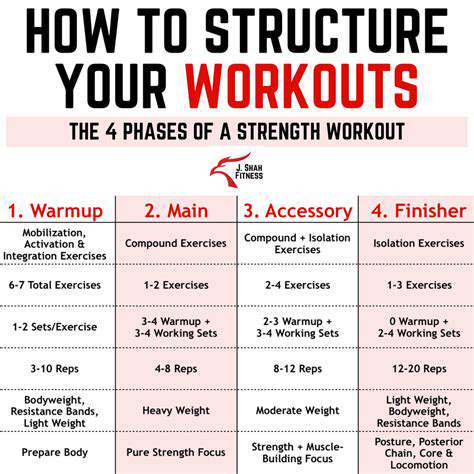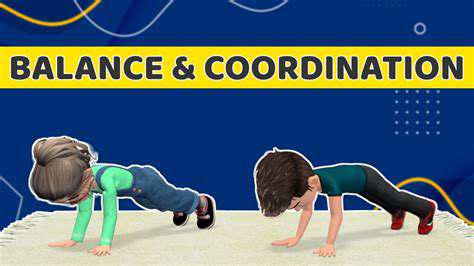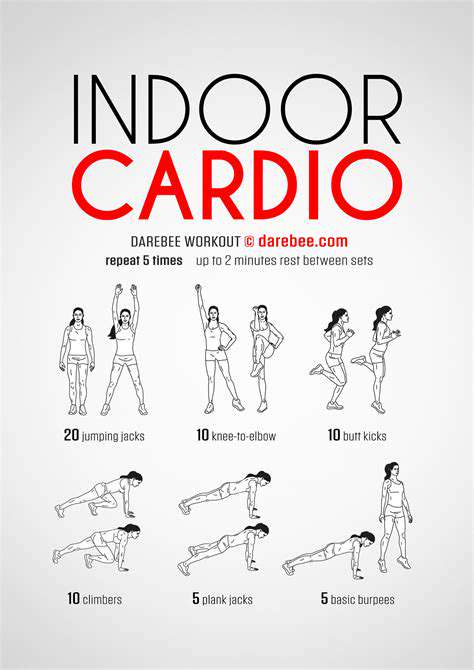Working with a Trainer: Strength Training for Senior Bone Health
Resistance training, whether using free weights, resistance bands, or bodyweight exercises, is a cornerstone of strength training for seniors. These exercises force the muscles to work against an opposing force, which stimulates bone growth and strengthens the musculoskeletal system. Choosing appropriate weights and resistance levels is crucial to ensure safety and effectiveness, and a qualified trainer can guide seniors through proper form and technique.
The focus should be on controlled movements and proper posture. This helps avoid injuries and maximizes the benefits of the exercise. Consistency is key, with regular sessions promoting sustained bone health. Resistance training also helps improve overall strength, which is vital for daily activities.
Importance of Weight-Bearing Exercises
Weight-bearing exercises are critical for stimulating bone formation. Activities like walking, jogging, stair climbing, and dancing put stress on the bones, encouraging them to become denser and stronger. These exercises are not only beneficial for bone health but also contribute to improved cardiovascular health and overall well-being. Finding activities seniors enjoy and can maintain consistently is key to long-term success in weight-bearing exercise programs.
Proper Form and Technique for Safety
Maintaining correct posture and form during strength training is paramount to prevent injuries. A qualified trainer can provide personalized guidance and demonstrate proper techniques for various exercises. Understanding the proper range of motion and focusing on controlled movements are crucial elements of safe and effective strength training, especially for seniors.
Proper form minimizes the risk of strains, sprains, and other musculoskeletal injuries. This emphasis on safety is essential for ensuring long-term participation in strength training programs. A trainer can also help modify exercises to suit individual needs and limitations.
Addressing Individual Needs and Limitations
Strength training programs for seniors must be tailored to individual needs and limitations. Age-related physical changes, medical conditions, and previous injuries should all be considered when designing a program. A qualified trainer can assess an individual's abilities, limitations, and medical history to create a safe and effective exercise plan. This personalized approach ensures optimal results and minimizes potential risks.
Building a Sustainable Strength Training Routine
Establishing a sustainable strength training routine is crucial for long-term bone health benefits. Seniors should aim to incorporate strength training exercises into their weekly schedule, ideally at least two to three times a week. Finding activities they enjoy and can realistically maintain over time is essential for adherence. Building consistency is paramount to seeing results and gaining the many benefits of strength training. This consistency ensures that the positive effects on bone density and overall fitness are sustained over time.

Regular breaks are crucial for preventing hand strain and fatigue, particularly when engaging in prolonged digital activities. Taking short, planned pauses throughout the day allows your hands to rest and recover from repetitive motions, reducing the risk of developing overuse injuries like carpal tunnel syndrome or tendonitis. This proactive approach to hand care is essential for maintaining long-term digital health and ensuring your ability to continue using your hands comfortably for extended periods.
Beyond Strength: Nutrition and Lifestyle Factors

Fueling Performance: The Role of Macronutrients
Proper nutrition is paramount for athletes seeking to maximize their performance, and it goes far beyond simply consuming enough calories. Understanding the importance of macronutrients—carbohydrates, proteins, and fats—is crucial for fueling workouts, supporting muscle recovery, and optimizing overall health. Carbohydrates are the primary source of energy for intense exercise, providing the body with the fuel it needs to power through demanding activities. Athletes should aim for a balanced intake of complex carbohydrates, like whole grains and fruits, which provide sustained energy release compared to simple sugars.
Proteins play a vital role in building and repairing muscle tissue, which is essential for strength gains and overall physical function. Including sufficient amounts of high-quality protein sources, such as lean meats, poultry, fish, eggs, and legumes, in your diet is key to supporting muscle growth and recovery. Adequate protein intake also helps in the synthesis of various hormones and enzymes, which are crucial for numerous physiological processes.
Hydration: The Unsung Hero of Athletic Performance
Proper hydration is often overlooked but is absolutely essential for athletic performance. Dehydration can lead to fatigue, reduced endurance, and impaired cognitive function, all of which can negatively impact training and competition. Maintaining an adequate fluid balance throughout the day, especially during and after workouts, is critical for optimal performance. Water is the most important beverage, but sports drinks can be beneficial when intense exercise lasts for more than an hour, as they replenish electrolytes lost through sweat.
The body loses significant amounts of fluid through sweat during physical activity. Replacing these lost fluids is essential to maintain blood volume and support circulatory function, which enables the delivery of oxygen and nutrients to working muscles. Ignoring hydration can lead to a cascade of negative effects on performance, from reduced muscle power to impaired cognitive function. Monitoring your hydration status, particularly during and after workouts, is vital for maximizing your performance and preventing health issues.
Micronutrients: The Supporting Cast
While macronutrients are the primary energy providers, micronutrients—vitamins and minerals—act as essential co-factors in various metabolic processes within the body. They are vital for optimal immune function, reducing inflammation, and supporting overall health, all of which are important for athletes. Vitamins and minerals are critical for enzyme function, energy production, and the repair of tissues damaged during exercise.
Specific micronutrients, such as vitamin D, iron, and calcium, play crucial roles in muscle function, bone health, and red blood cell production. A balanced diet rich in fruits, vegetables, and whole grains is typically sufficient to meet these needs. However, supplementation may be necessary in certain cases, especially for athletes with specific nutritional deficiencies or increased needs.
Optimizing Nutrition for Specific Goals
The nutritional needs of athletes vary depending on the specific sport, training intensity, and individual goals. Endurance athletes, for example, may need a higher carbohydrate intake to fuel prolonged exercise, while strength athletes might prioritize protein for muscle growth. Understanding these individual needs is crucial for developing a personalized nutrition plan. A registered dietitian or sports nutritionist can help you tailor your diet to meet your specific requirements and maximize your performance.
Proper nutrition is also essential for recovery after exercise. Consuming adequate nutrients, particularly protein, aids in muscle repair and growth, enabling the body to adapt and improve over time. This is crucial for preventing overtraining and optimizing performance gains. Knowing how to fuel your body before, during, and after exercise is critical for athletes striving to reach their full potential.
Beyond the Plate: Lifestyle Factors for Optimal Nutrition
Nutrition is not just about the food you eat; it's also about lifestyle factors like sleep, stress management, and overall well-being. Adequate sleep is vital for muscle recovery and hormone regulation, significantly impacting athletic performance. Chronic stress can negatively impact the body's ability to absorb and utilize nutrients effectively. Prioritizing stress reduction through techniques like meditation or yoga can improve nutrient utilization and overall athletic performance.
Maintaining a healthy gut microbiome through a balanced diet, including prebiotics and probiotics, can also play a crucial role in nutrient absorption and overall health. A healthy gut can support optimal nutrient uptake, which is essential for athletes looking to achieve peak performance. Considering these lifestyle factors can further enhance the effectiveness of your nutritional strategy.











